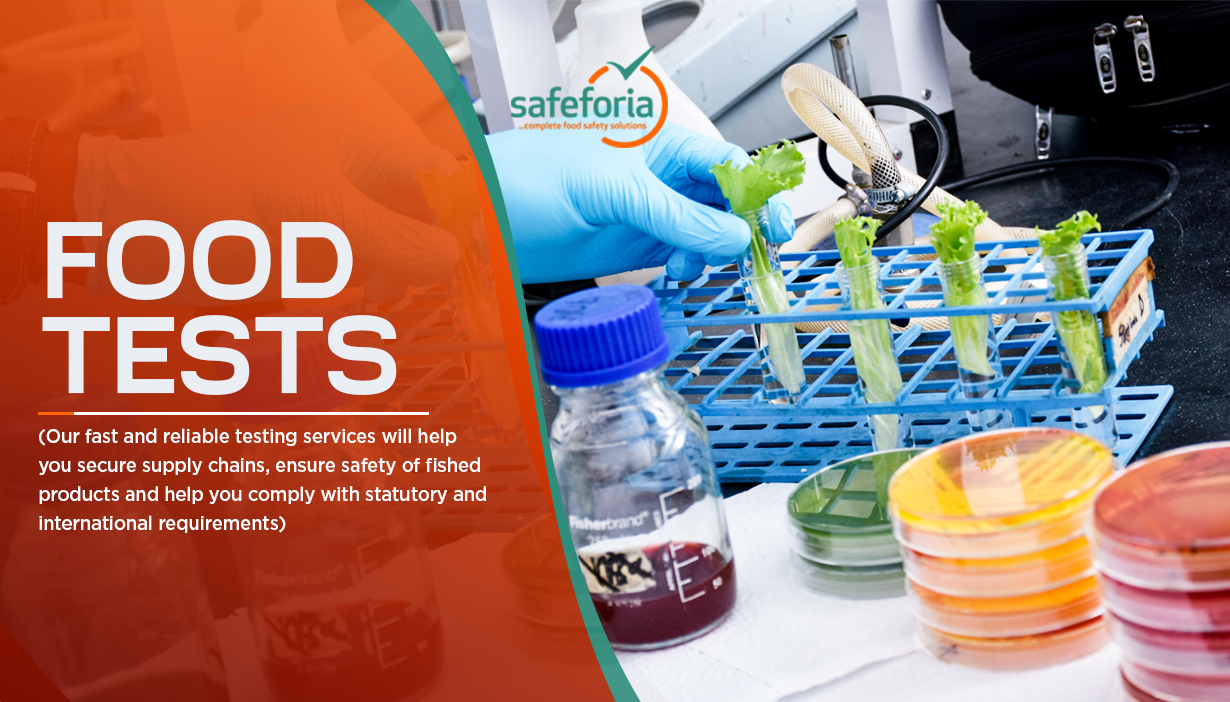Food Test
Food tests involve scientific analyses of foods to provide vital information about their characteristics and composition. They are used to assess the quality, safety and compliance to set criteria.
Benefits of Food Test :
- Validation and verification of quality assurance and food safety systems
- Confirm quality and safety of raw materials, ingredients and finished products
- Provide objective analytical information on manufacturing and preparation processes
- Supports compliance to national and international requirements and critical decision making
- Helps in root cause analysis of non-conforming products and processes
Food Test services we offer
Microbiological tests are done to assess the presence and concentrations of microorganisms in food commodities (E.g. ingredients and finished products), food contact surfaces (E.g. conveyors and ingredient tanks) and food processing environments (e.g. air quality). The purpose of microbiological tests it to detect and restrict undesirable microorganisms in foods, food contact surfaces and food environments.
Our food Microbiology Lab has the competency and the capacity to support your quality assurance and food safety programs.
Nutritional tests are done to provide information on the nutritional composition of foods. This is important because consumers are more aware that ever before about the role that food plays in our health and wellbeing. Nutritional tests generate information that goes on the nutritional labels of foods; consumers use nutritional labels to make informed food purchase decisions. Regulatory agencies also verify that the foods contain components in the quantities listed on nutritional labels.
Physico-chemical tests are analytical tests that provide information about the physical and chemical properties of food. Physical testing like weight, volume, colour, texture, viscosity are important indicators of quality and consistency of raw materials and finished products. They are used to correlate product characteristics with consumer perception and provide information for food safety labels when finished products must undergo a cooking step. Chemical tests are used to identify presence and concentration of compounds that influence product composition, characteristics and product safety. Common chemical tests include assessment of concentrations of toxic compounds such as aflatoxins and heavy metals that are and indicators of safety. Other chemical test such as alcohol and acidity are indicators of food quality.
| Microbiology Tests | Physico-chemical Test | Nutritional Tests |
|---|---|---|
| Salmonella | Total solids | Fat (Solid, liquid and dairy) |
| Listeria monocytogenes | Free Fatty Acids | Crude protein |
| Campylobacter | Peroxide Value | Carbohydrate and Energy |
| Clostridium perfringens | Iodine Value | Calcium |
| Bacillus cereus | Saponification Value | Iron |
| E. coli | Unsaponifiable Matter | Phosphorus |
| Staphylococcus aureus | Impurities (in oil) | Sucrose |
| Aerobic Plate Count | Impurities (water insoluble) | Sugars |
| Enterobacteriaceae | Acidity | Sodium Chloride |
| Total Coliforms | Alkalinity of soluble ash | Crude fibre |
| Fecal coliforms | Fat acidity | Vitamin A |
| Yeast and Molds | Acid value of oil | Vitamin C |
| Aerobic Spore Count | Lead | Cholesterol in oil |
| Anaerobic Spore Count | Arsenic | |
| Commercial sterility | Starch | |
| Moisture | ||
| Water soluble ash | ||
| Acid insoluble ash | ||
| Texture |


